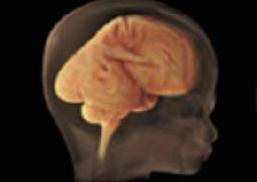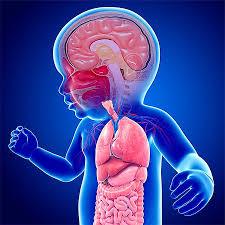
4 minute read
Neurodevelopment
Fetal & Neonatal Health: Brain Injury and Neurodevelopment
Using heart rate variability to predict clinical disease in preterm babies
Advertisement
Suitability: Honours/PhD
Location: Level 5, Monash Medical Centre, Clayton Project Leaders: A/ProfFlora Wong, Prof Rosemary Horne, Dr Stephanie Yiallourou Email: flora.wong@monash.edu Phone: 03 85723655 (A/ProfWong)
Project Description: The early clinical signs of diseases in the preterm baby in the neonatal intensive care unit (NICU) are often very subtle and difficult to detect. However, once the infection or disease is developed, the preterm baby often deteriorates and becomes sick very rapidly. We aim to develop a new method using heart rate variability (HRV) to detect early clinical diseases. HRV is a measure of the beat-to-beat variation in time between each heartbeat. This variation is controlled by an important part of the nervous system called the autonomic nervous system (ANS). Our project will assess HRV as a non-invasive way to identify changes in the clinical condition of the preterm baby. We have recently acquired a clinical research software known as ICM+, developed at Cambridge University. The ICM+ software offers data collection and real-time analysis, facilitating personalised medicine. ICM+ can be connected to our bedside monitors in the NICU and perform continuous analyses of the HRV in real-time, on multiple babies simultaneously.
We propose that continuous HRV can be used to assess well-being of the preterm babies in NICU, detect early infections and predict bleeding in the brain.
RESEARCH PLAN: In preterm babies born at ≤28 weeks of gestation, the ECG recording from the NICU cot side monitor will be continuously analysed for HRV in the first 4 weeks of life, using the ICM+ software. Clinical records of the babies will be examined to determine periods of when the baby was clinically stable and when the baby suffered from infection and/or developed bleeding in the brain.
Keywords: Prematurity, heart rate variability, infection, brain injury
Ganaxolone: A New Treatment for Neonatal Seizures
Suitability: Honours/PhD
Location: The Ritchie Centre, Hudson Institute of Medical Research; Level 5, Translational Research Facility, Monash Medical Centre, Clayton Project Leaders: Dr Tamara Yawno, A/Prof Suzie Miller, Dr Michael Fahey Email : tamara.yawno@hudson.org.au, suzie.miller@monash.edu, michael.fahey@monash.edu Phone: 03 8572 2796 (A/Prof Miller)
Project Description: Seizures in neonates are relatively common; they are powerful predictors of long-term cognitive and developmental impairment. There is also a significant concern about current anti-seizure therapies, which can cause brain injury as they have the potential to be neurotoxic. We will investigate the effects of the synthetic GABAA agonist ganaxolone, or phenobarbitone given at the onset of seizure in term fetal sheep caused by hypoxia ischemia. This project will utilise our established fetal sheep model, with state-of-the-art monitoring equipment to investigate brain activity and brain histopathology.
Keywords: ganaxolone, neonatal seizures, brain injury, new born, brain activity.
Fetal & Neonatal Health: Brain Injury and Neurodevelopment
Improving functional deficits associated with fetal growth restriction
Suitability: Honours/PhD
Location: The Ritchie Centre, Hudson Institute of Medical Research; Level 5, Translational Research Facility, Monash Medical Centre, Clayton Project Leaders: A/Prof Suzie Miller, Dr Amy Sutherland Email: suzie.miller@monash.edu Phone: 03 8572 2796 (A/Prof Miller)
Project Description: Fetal growth restriction (FGR) is a serious, but common pregnancy complication, describing the infant that is born very small due to failure to achieve normal growth. FGR is present in up to 9% of pregnancies in Australia, and is strongly associated with complications after birth, including brain injury that underlies the motor deficits associated with cerebral palsy or, more subtle but no less significant cognitive dysfunctions. There are currently no antenatal or postnatal treatments that can improve outcomes for FGR infants, but this is an area of strong research interest. For obvious reasons we cannot test interventions or treatments in human pregnancies or infants, and therefore animal models of FGR are required to examine whether neuroprotective treatments are safe, feasible, and can significantly improve functional outcomes.
In the current study we will examine treatment strategies to improve the structure and function of the FGR lamb brain. A number of different neuroprotective strategies are of interest that could potentially be applied either during pregnancy (antenatally) or after birth (postnatally) that aim to optimise brain development.
Treatments of interest include anti-oxidants, antiinflammatory compounds, and cord blood stem cells. We will apply complimentary assessments of brain structure and function to test the efficacy of our neuroprotective treatments of interest.
Keywords
brain development, neuroprotection, fetal growth restriction, FGR, IUGR
Developing 3D brain organoids to model perinatal brain injury
Suitability: Honours/PhD
Location: The Ritchie Centre, Hudson Institute of Medical Research; Level 5, Translational Research Facility, Monash Medical Centre, Clayton Project Leaders: Dr Courtney McDonald, A/Prof Michael Fahey Email: courtney.mcdonald@monash.edu Phone: 03 8572 2799
Project description: We are developing 3- dimensional human brain organoids using induced pluripotent stem cells (iPSCs). We can model the effect of neuroinflammation in our brain organoids, thereby creating an in vitro model of perinatal brain injury. We will use this in vitro 3D model to test the mechanism of action of umbilical cord blood and mesenchymal stem cells, specifically assessing the paracrine and direct effects and determine the optimum stem cell type for reducing neuroinflammation. This project will involve extensive cell culturing with both iPSCs and perinatal stem cells, multicolour flow cytometry and molecular analysis using PCR and protein assays.









